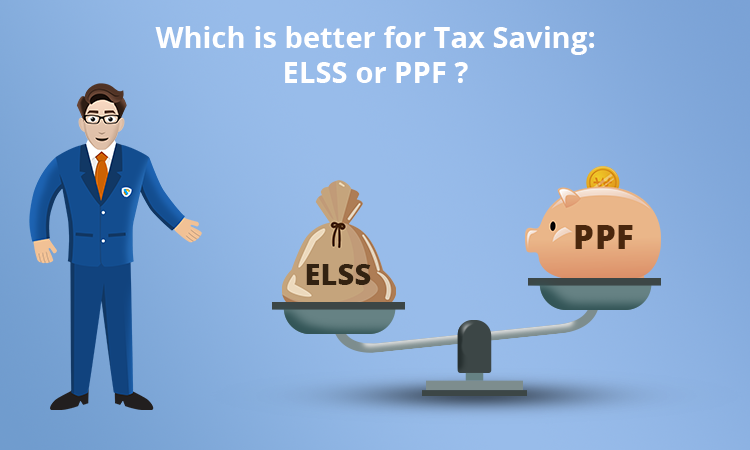Which is a better Tax Saving Investment Option at the March End - ELSS or PPF?

Before knowing about the investment in ELSS and PPF, primarily you should know about these two terms intensely.
ELSS is the Equity-linked saving schemes that help the investors in tax saving investments in India, if invested up to 1 lakh 50 thousand under section 80 C of the Income tax act. These are the investment options which give away to the investors on how to deduct their taxes. But it is possible majorly when if it is done before 31st March. Investing in ELSS is highly suggested by investment and experts.
Now coming over to PPF, it is one of the old and most famous schemes which provide long term saving cum investment products, due to its blend of returns, savings, and tax benefits. It was offered in 1968 to the public by the finance ministry’s national savings institute.
For the creation of long term wealth and to facilitate the wealth creation journey, it has emerged as a powerful tool for the investors, since then. Basically, PPF was being used as a tool to create a corpus for the retirement of old people by saving and collecting some portion of their income regularly (each month or year) over a long period of time. Along with the attractive interest rates, it also has the tax saving investment options.
The answer to a common question that should you invest in ELSS and PPF before the end of March is ‘Yes’, it definitely makes sense. Rather than investing in PFF, ELSS should be considered over it as it is much better than PFF. Along with the features of both the schemes, the advantages of ELSS over PFF are mentioned below –
1) Investing through SIP in ELSS
SIP’s are the automatic investment techniques in which a particular share of your income will be deducted every month and allow you to designate auto investment. It is just like the EMI’s deduction, the same way the amount will be deducted and transferred to the mutual funds account through ECS. It is one of the best tax saving options in India as you will be saving a good amount of tax at the end of the year by investing a small amount every month.
Another advantage is that the rupee cost averaging is maintained which cannot be maintained if you pay yearly. As you all know the market fluctuation, if you pay every month lesser the risk will be rather than paying every year. PFF does not allow any of this facility as SIP’s are not available in PPF schemes.
2) No maturity date in ELSS
The best part of these funds is they don’t have a maturity date. You can continue to invest in these funds even after the lock-in period has come to an end.
In most of the PFF schemes, you cannot keep the investment continue after the lock-in period is over. This way you can earn much higher returns due to the power and facility of compounding interest which is given to the investors in these funds.
3) Lowest lock-in among tax saving investments in ELSS
Lock in period is one of the biggest issues when you talk about tax saving investments. National pension system (NPS) and Employee provident fund (EPF) bounds you to keep your investment locked till the time you retire – FD’s has a lock-in period of 5 years, PPF has a lock-in period of 15 years.
But talking of ELSS funds, they just have a lock-in period for 3 years which means you don’t need to keep your investments for long. You can redeem it after the time of 3 years.
4) Inflation-beating returns in ELSS
ELSS is highly equity-oriented investments. It is a coercion to invest minimum 80% of the assets in equity and equity-oriented instruments which is the highest equity allocation if you compare it with any of the tax saving investment options.
This high amount of equity exposure that comes up with the ELSS scheme would not be liked by traditional investors. After all, no one can obstruct that equity is an explosive asset class.
The only way of keeping you safe from the risks of equity and prosperity out of it is by investing in ELSS funds. Equity will certainly help you generate higher returns which would be even higher than the prevailing rate of inflation whereas PFF has nothing to do with the rate of inflation.
To make you understand better, let’s understand with the help of an example.
“Mr. A has invested 1.5 Lakhs in PFF of lock-in period of 15 years. Over 15 years, Mr. A’s investment sums up to 22.5 Lakhs and after adding up the interest paid by the government, it would become 51.8 lakhs. On the other hand, Mr. B who has invested the same amount in ELSS for the same time period, received the amount would sum up to 1.14 crore (2.2 times).“
You can take a deep breathe because it is actually true!